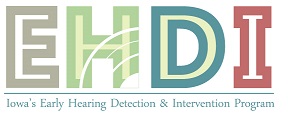Communication Options 
How Hearing Loss Affects Communication
How a child is affected by a hearing loss depends on a number of factors:
- the type of hearing loss
- the degree of hearing loss
- the configuration of hearing loss
- other factors, including:
- family involvement
- the age at which hearing loss occurs
- the age at which hearing loss was identified
- the age at which intervention was provided
- the child’s other health conditions
Hearing loss in a child is different than hearing loss in an adult. This is because a child has not yet learned speech and language. Adults with hearing loss can sometimes get by without hearing aids because they know and can apply the rules of language to daily conversations with others. For a child, even a mild hearing loss can affect his ability to develop speech and language skills. Children need to hear all of the sounds of their language in order to learn how to talk.
Children with severe to profound hearing loss often need to learn some form of visual communication, such as sign language, because even with a hearing aid, they may not be able to hear all the sounds of speech. This is not to say that children with severe to profound hearing loss will never learn to talk. Rather, they may need to get speech and language information in ways other than hearing alone.
Children with milder degrees of hearing loss may also benefit from knowing some form of visual communication. There may be times (e.g., swimming, bathing) when a child is not wearing her hearing aids, but needs to communicate.
Frequently Asked Questions About Communication Methods
How do we decide what’s best for our child and family?
No single communication method is right for every family. The method of communication that you choose for your child should take into consideration his individual characteristics as well as the needs of your family. It is important that all the members of your family learn to communicate with him or her. The different communication methods have advantages and disadvantages in terms of ease of use and ease of learning.
It is important to understand that no two families are the same, and no two hearing losses are the same. Even though two audiograms may look the same, the children with those hearing losses may function very differently. Ask the professionals working with your child for resources about communication methods and ask what is available in your community. If possible, contact families or individuals that have personal experience using the different communication methods.
What if I try a communication method and later decide it isn’t right?
It is very important to begin communicating with your child as soon as possible. You will be encouraged to choose a communication method very soon after her hearing loss is confirmed. Her degree and type of hearing loss will play a major role in the decision you make. Professionals working with you on the speech and language development of your child can provide information on her progress. They can recommend another method you can change to if you feel this is in the best interest of your child and family.
Will my child’s hearing loss affect his ability to learn? How can I help my child to learn?
Many professionals will be involved with your child and family throughout his education. They can offer guidance on ways you can help your child learn. What you as a parent can do is to continue interacting with your child in a normal way. Talk with your child and treat him as you would if your child had no hearing loss. If he has a severe or profound loss, you may decide to use some type of visual communication to supplement.
Communication Options
Below you will find the most commonly used communication methods. When choosing a communication method for your child and family, there are some things to consider: your family’s preference, your child’s development, your family support, your community services, and the expertise of the professionals working with your child. Work with your provider to determine which option is best for your child.
American Sign Language (ASL)
American Sign Language uses the placement, movement, and expression of the hands, face, and body. ASL is a complete language with its own grammar and syntax. ASL is another complete language just like English is a complete language. It is considered by many members of the Deaf community to be the native language of people who are deaf. Children born to parents who are deaf learn ASL in the same way that hearing children learn spoken language from hearing parents. Since ASL is not a “method” of learning English but a separate language, hearing parents must work with those fluent in ASL to learn the language and to provide their child with the opportunity to learn ASL. If you have a child under 3 years old who is deaf or hard of hearing and would like to learn more about ASL, you are eligible for a free online ASL class.
Aural-Oral
Aural refers to hearing; oral, to speaking. In the aural-oral method, listening is the primary means for learning language. Speech is the primary means of expressing language. The use of whatever hearing a child has is very important. Children are encouraged to wear hearing aids or a cochlear implant during their waking hours. For this method to be effective, these devices must allow the child to hear speech sounds.
In addition to listening, a child is encouraged to watch the speaker to get additional information from speech reading (lip-reading), facial expressions, and gestures. Hearing through hearing aids or a cochlear implant, even in the best of circumstances, is not the same as typical hearing. Early intervention services need to include specific strategies that emphasize listening and communication.
Auditory-Verbal
The auditory-verbal method is based on a specific philosophy within the broader aural-oral category. Again, the development of language through listening and the use of residual hearing are central. The use of hearing aids or a cochlear implant will be the same as in the aural-oral method, but there is little if any emphasis on visual cues such as speech reading or gesture. Parents participate in all therapy sessions and use the techniques they learn with their child at home. Families who use an auditory-verbal approach are encouraged to place their children in regular preschool and general education classes, rather than special education or deaf education classes.
Bilingual Language Development
A person is described as bilingual when they are fluent in two languages. For a person in the United States who is deaf, these two languages are usually ASL and English. When a child is born to parents who are Deaf, the language of the home and the first language of the child is usually ASL with English as a second language. When a child is born to parents who are hearing, the language of the home and the first language of the child would typically be English or whatever language is spoken in the home. In a bilingual method, the hearing family learns and uses ASL in addition to English. In some programs, the family uses English and the school program uses ASL in the early years,adding English as a second language as the child gets older.
Cued Speech
Cued speech uses English in a way that can be seen as well as heard. It uses a combination of speech reading, hand shapes, and hand positions near the face to communicate speech sounds. For example, when you speak, p, b, and m all look the same on the lips. As a result, the words pat, bat, and mat all look exactly the same to someone who is speech reading. Using different hand shapes for the p, b, and m allows the listener to understand which word is being said.
Manually Coded English (MCE)
The Manually Coded English method uses a visual form of the English language, or sign language. English is represented (coded) by signs made with the hands. Several different systems for manually coding English exist. Each one has its own rules and variations. Most use American Sign Language (ASL) signs as a base and English word order. Manually Coded English follows English language rules. All sign language methods require a commitment from all family members to learn and use signs for communication with the child. If the family chooses this method, it is important for parents to learn sign as quickly as possible. That way, their children can learn language from them in the same way children with hearing learn from their parents. Systems of MCE include: Signed Exact English1, Signed Exact English2, and Rochester Method. Pidgin is a Contact Sign Language which typically uses ASL signs but in English word order.
Simultaneous Communication
The simultaneous communication method combines spoken and signed communication. Parents are encouraged to both speak and sign when they communicate with their children. Some form of manually coded English is used for the sign system. Children wear hearing aids or a cochlear implant and are encouraged to use their hearing as well as sign and speech.

Total Communication
With the total communication philosophy, a child with hearing loss uses all forms of communication available to develop language skills as early as possible. These may include child-devised gestures, formal sign language, speech, speech reading, finger spelling, reading, and writing. The child may also use individual or group amplification systems to utilize residual hearing as much as possible.
Available Technology
There are also a number of technology options to enhance hearing. Learn more here. 
Resources available to help you find the best fit:
The following are a list of helpful websites for audiological intervention and communication options:
SIGN LANGUAGE
AUDIOLOGY/AUDIOGRAM
AUDITORY/ORAL AND AUDITORY/VERBAL
COCHLEAR IMPLANTS
CUED SPEECH
COMMUNICATION OPTIONS
DEAFNESS/DEAF CULTURE
HEARING AIDS
